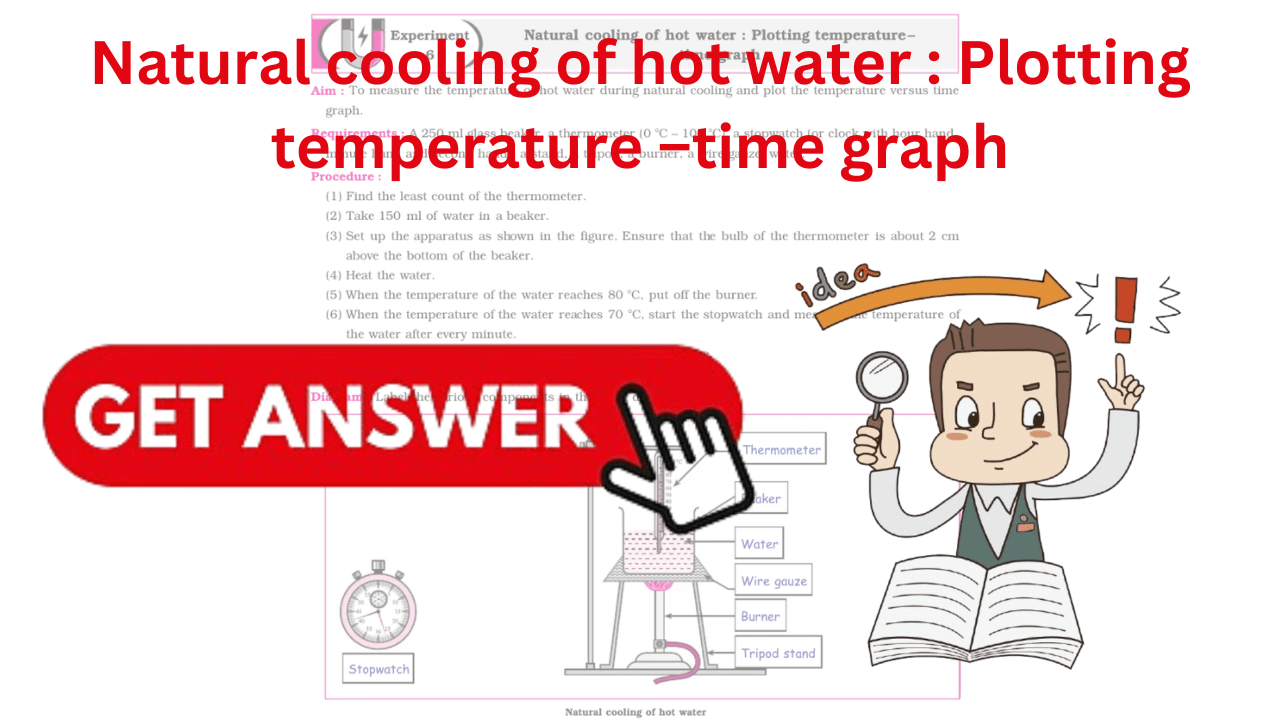Standard 10th Science Experiment 6 Answer Solutions: Natural cooling of hot water : Plotting temperature –time graph Answer Solutions.
Natural cooling of hot water : Plotting temperature –time graph
Aim :
To measure the temperature of hot water during natural cooling and plot the temperature versus time graph.
Requirements :
A 250 ml glass beaker, a thermometer (0 °C – 100 °C), a stopwatch (or clock with hour hand,minute hand and second hand), a stand, a tripod, a burner, a wire gauze, water.
Procedure :
(1) Find the least count of the thermometer. (2) Take 150 ml of water in a beaker. (3) Set up the apparatus as shown in the figure. Ensure that the bulb of the thermometer is about 2 cmabove the bottom of the beaker. (4) Heat the water. (5) When the temperature of the water reaches 80 °C, put off the burner. (6) When the temperature of the water reaches 70 °C, start the stopwatch and measure the temperature ofthe water after every minute. (7) Note the temperature till the water attains room temperature. (8) Plot the graph of temperature versus time.
Diagram :
Label the various components in the given diagram.

Observations :
(1) Least count of the thermometer = 1°C.
(2) Initial temperature of water = 70°C.


Inferences / Conclusions :
(1) The hot water loses heat to the surroundings. This results lowering of the temperature of the water.
(2) The rate of cooling depends on the excess of temperature of water over the surroundings. When the difference between the temperature of hot water and the temperature of the surroundings is more, the rate of cooling is more.
Precautions :
(1) Switch off the ceiling fans during the experiment. (2) The bulb of the thermometer should not touch the bottom of the beaker.
Multiple Choice Questions
Choose the correct alternative and write its letter (A), (B), (C), (D) in the box :
Which of the following is the correct relation?
(A) 4.18 calories = 1 joule (B) 1 calorie = 4.18 joules (C) 107 calories = 1 joule (D) 1 calorie = 107 joule
Answer: B
2. Which of the following are the processes of transfer of heat?
(A) conduction (B) convection (C) radiation (D) All the above
Answer: D
3. The temperature at which water changes into steam is called the of water.
(A) melting point (B) boiling point (C) expansion point (D) dew point
Answer: B
4. Heat is absorbed when.
(A) water is converted into vapour. (B) water is converted into ice. (C) steam is converted into water. (D) all of these
Answer: A
